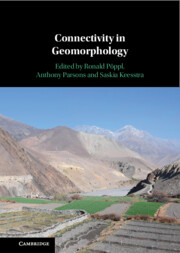Book contents
- Connectivity in Geomorphology
- Connectivity in Geomorphology
- Copyright page
- Contents
- Contributors
- Preface
- Acknowledgements
- Part I Introduction
- Part II Connectivity in Process Domains
- Part III Quantifying Connectivity in Geomorphology
- Part IV Managing Connectivity
- 12 Agricultural Land
- 13 Rivers and Wetland Systems
- 14 Drylands
- 15 Coasts and Deltas
- Index
- References
13 - Rivers and Wetland Systems
from Part IV - Managing Connectivity
Published online by Cambridge University Press: 10 April 2025
- Connectivity in Geomorphology
- Connectivity in Geomorphology
- Copyright page
- Contents
- Contributors
- Preface
- Acknowledgements
- Part I Introduction
- Part II Connectivity in Process Domains
- Part III Quantifying Connectivity in Geomorphology
- Part IV Managing Connectivity
- 12 Agricultural Land
- 13 Rivers and Wetland Systems
- 14 Drylands
- 15 Coasts and Deltas
- Index
- References
Summary
River and wetland case studies from contrasting landscape settings with differing sediment cascades and (dis)connectivity relationships in Australia and New Zealand present contrasting sediment ‘problems’. Here we use the concept of switches that regulate the operation of buffers, barriers and blankets as a basis to develop catchment-scale sediment management plans. We present plans for managing sediment (dis)connectivity for each case study. We conclude with five key factors that practitioners need to consider when embarking on managing sediment (dis)connectivity of rivers and wetlands in practice.
- Type
- Chapter
- Information
- Connectivity in Geomorphology , pp. 314 - 354Publisher: Cambridge University PressPrint publication year: 2025

